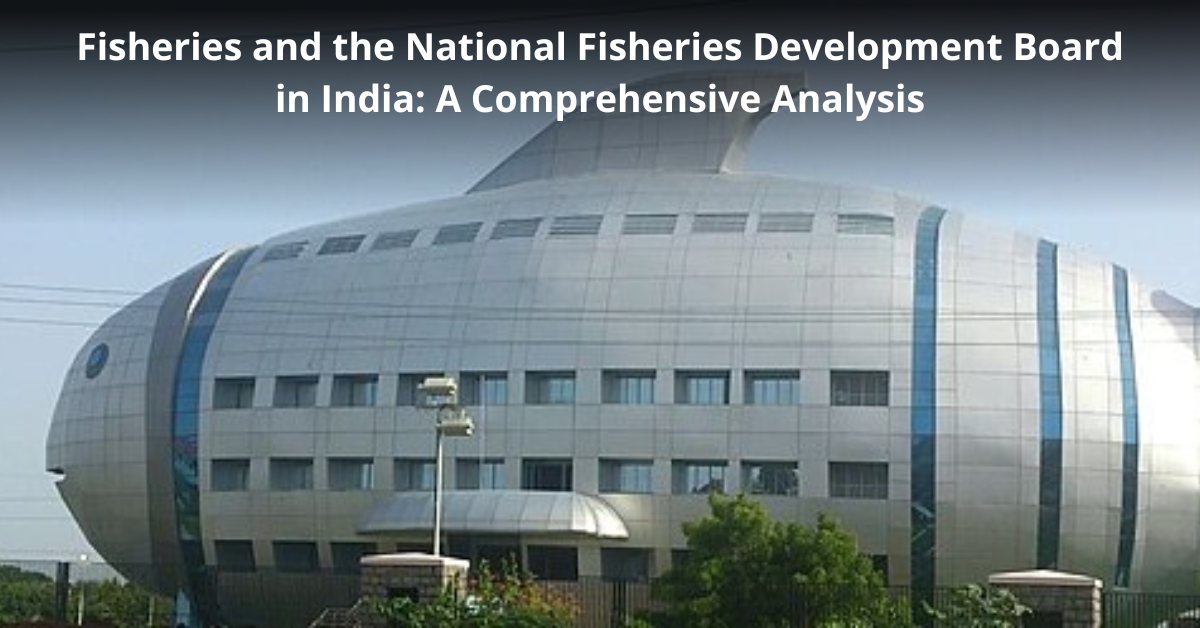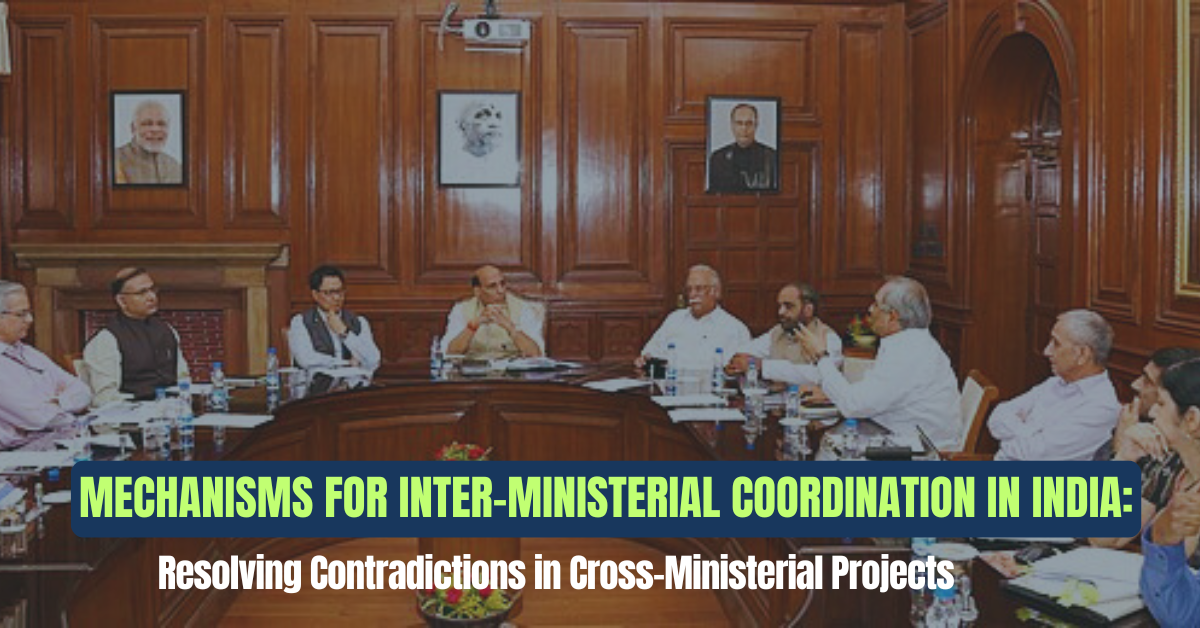Introduction
The fisheries sector in India plays a crucial role in the country’s economy, providing employment to millions, contributing to food security, and generating valuable foreign exchange through exports. With its vast coastline, extensive inland water resources, and diverse aquatic ecosystems, India has immense potential in both marine and inland fisheries. At the forefront of harnessing this potential and addressing the sector’s challenges is the National Fisheries Development Board (NFDB). This article delves into the multifaceted aspects of fisheries development in India, exploring the historical evolution of the sector, the establishment and role of the NFDB, and the regulatory framework that governs this vital industry.
Historical Context and Evolution of Fisheries Sector
Fishing has been an integral part of Indian culture and economy since ancient times, with traditional fishing communities playing a significant role in coastal and riverine areas. However, the modern development of the fisheries sector in India can be traced back to the post-independence era, when the government recognized its potential for food security and economic growth.
The early years of fisheries development focused primarily on increasing production through the introduction of mechanized fishing vessels and improved gear. The 1960s and 1970s saw a significant expansion of marine fishing activities, with the introduction of trawlers and purse seiners. This period also witnessed the beginnings of scientific aquaculture, with research institutions like the Central Institute of Freshwater Aquaculture (CIFA) and the Central Marine Fisheries Research Institute (CMFRI) playing crucial roles in developing and disseminating new technologies.
The 1980s and 1990s marked a shift towards a more holistic approach to fisheries development, with increasing attention paid to sustainability, resource conservation, and the socio-economic conditions of fishing communities. This period also saw the emergence of shrimp aquaculture as a major export-oriented activity, bringing both economic benefits and environmental challenges.
The turn of the millennium brought new challenges and opportunities for the Indian fisheries sector. Globalization opened up new export markets, but also increased competition and raised concerns about sustainability and food safety. It was in this context that the need for a centralized body to guide and coordinate fisheries development efforts became apparent, leading to the establishment of the National Fisheries Development Board.
The National Fisheries Development Board: Establishment and Mandate
The National Fisheries Development Board (NFDB) was established in 2006 as a registered society under the Ministry of Agriculture and Farmers Welfare, Government of India. The Board was set up with the primary objective of coordinating fisheries development in marine and inland sectors, and to enhance fish production and productivity in the country.
The mandate of the NFDB, as outlined in its Memorandum of Association, includes:
Promoting integrated development of fisheries and aquaculture in a sustainable manner. Achieving enhancement of fish production and productivity in the country. Improving the socio-economic conditions of fishers and fish farmers. Coordinating activities pertaining to fisheries undertaken by different ministries/departments in central and state governments. Providing modern infrastructure mechanisms for fisheries and ensuring their effective management and optimum utilization. Implementing a national-level fisheries development program through state/union territory governments and other agencies.
These objectives underscore the comprehensive role envisioned for the NFDB in nurturing and modernizing the fisheries sector.
The NFDB’s approach to fisheries development is multifaceted, encompassing both capture fisheries and aquaculture, and addressing issues ranging from production enhancement to marketing and export promotion. The Board works closely with state governments, research institutions, and other stakeholders to implement its various programs and schemes.
Regulatory Framework Governing Fisheries Sector in India
The regulatory framework governing the fisheries sector in India is complex, involving multiple laws, rules, and regulations at both the central and state levels. While the NFDB plays a crucial role in policy formulation and implementation, several other regulatory mechanisms are in place to ensure sustainable development and management of fisheries resources.
The Indian Fisheries Act, 1897
This Act, although dating back to the colonial era, still forms the basis of fisheries regulation in many states. It provides for the protection of fish in inland and coastal areas. However, recognizing its limitations in addressing modern challenges, many states have enacted their own fisheries acts.
The Maritime Zones of India (Regulation of Fishing by Foreign Vessels) Act, 1981
This Act regulates fishing by foreign vessels in Indian waters. It states in Section 3:
“No foreign vessel shall be used for fishing within any maritime zone of India except under, and in accordance with the terms and conditions of, a permit granted under this Act.”
This provision is crucial for protecting India’s marine resources and the interests of domestic fishers.
The Coastal Aquaculture Authority Act, 2005
This Act established the Coastal Aquaculture Authority to regulate coastal aquaculture activities. Section 12 of the Act states:
“Save as otherwise provided in this Act, no person shall carry on, or cause to be carried on, coastal aquaculture in coastal area or traditional coastal aquaculture in the traditional coastal aquaculture farm which lies within the Coastal Regulation Zone referred to in sub-section (1) of section 3, except under, and in accordance with, a registration certificate issued under this Act.”
This provision aims to ensure that coastal aquaculture is carried out in a sustainable manner, balancing economic interests with environmental concerns.
The Marine Fishing Regulation Act (enacted by coastal states)
Various coastal states have enacted their own Marine Fishing Regulation Acts to manage fishing activities in their territorial waters. These acts typically regulate the types of fishing gear that can be used, establish fishing zones, and implement closed seasons for fishing.
Key Case Laws Shaping Fisheries Sector
The fisheries sector has been subject to various legal disputes and interpretations over the years, reflecting the complex interplay of economic, environmental, and social interests. Some significant case laws include:
Jagannath vs. Union of India & Ors. (1996)
In this landmark case, known as the “Aquaculture case,” the Supreme Court of India dealt with the environmental impact of intensive shrimp farming in coastal areas. The court observed:
“The shrimp culture industry/the shrimp ponds are the monoculture system which has severely affected the coastal ecosystem. The intensive farming has affected the coastal environment in many ways such as degradation of soil and water, depletion of potable underground water, destruction of mangroves and depletion of flora and fauna.”
This judgment led to significant changes in the regulation of coastal aquaculture and emphasized the need for sustainable practices in the sector.
Kerala Swatantra Matsya Thozhilali Federation vs. Union of India & Ors. (2018)
This case dealt with the issue of deep-sea fishing licenses granted to foreign vessels. The Kerala High Court, while canceling these licenses, stated:
“The grant of licenses to foreign vessels for deep-sea fishing in India’s Exclusive Economic Zone without proper consultation with stakeholders and assessment of impact on traditional fishing communities is arbitrary and violative of Article 14 of the Constitution.”
This judgment highlighted the need to balance the interests of traditional fishing communities with the objective of increasing fish production through modern methods.
The Role of NFDB in Fisheries Development
The National Fisheries Development Board has played a pivotal role in shaping India’s fisheries sector since its inception. Its activities span several crucial areas:
- Infrastructure Development: The NFDB has supported the development of fishing harbors, landing centers, and fish markets across the country. This has improved the handling and marketing of fish, reducing post-harvest losses and improving the quality of fish available to consumers.
- Technology Promotion: The Board promotes the adoption of modern technologies in both capture fisheries and aquaculture. This includes supporting the mechanization of fishing vessels, promoting cage culture in reservoirs, and encouraging the use of Recirculating Aquaculture Systems (RAS) for intensive fish farming.
- Capacity Building: The NFDB conducts training programs for fishers, fish farmers, and other stakeholders in the sector. These programs cover various aspects of fisheries and aquaculture, including modern fishing techniques, fish processing, and value addition.
- Research and Development: The Board supports research activities in collaboration with various fisheries research institutions. This includes research on breeding and culture of new fish species, development of low-cost fish feeds, and studies on fish health management.
- Marketing and Export Promotion: The NFDB works to improve the domestic marketing of fish and promotes the export of fish and fishery products. This includes supporting the creation of cold chains, promoting value-added products, and facilitating participation in international trade fairs.
- Resource Conservation: Recognizing the importance of sustainable fisheries, the Board supports initiatives for the conservation of aquatic resources. This includes programs for the ranching of fish seed in natural water bodies and the promotion of reservoir fisheries.
These multifaceted interventions by the NFDB have been crucial in enhancing the productivity and sustainability of India’s fisheries sector, addressing various challenges faced by fishers and fish farmers.
Recent Developments and Initiatives
In recent years, the fisheries sector has witnessed several significant developments, many of which have been supported or facilitated by the NFDB:
- Pradhan Mantri Matsya Sampada Yojana (PMMSY): Launched in 2020, this scheme aims to bring about the Blue Revolution through sustainable and responsible development of the fisheries sector. With a substantial investment of Rs. 20,050 crore over five years, it is the largest ever investment in the fisheries sector.
- Focus on Seaweed Cultivation: Recognizing the potential of seaweed as a source of food, feed, and various industrial products, there has been an increased emphasis on promoting seaweed cultivation, particularly in coastal states.
- Promotion of Ornamental Fisheries: The NFDB has been supporting the development of ornamental fish breeding and culture, recognizing its potential for employment generation and export earnings.
- Use of ICT in Fisheries: There has been a growing emphasis on using Information and Communication Technology (ICT) in fisheries management. This includes the development of mobile apps for disseminating information to fishers and the use of satellite technology for identifying potential fishing zones.
- Emphasis on Fish Processing and Value Addition: Recognizing the need to increase the value of fish production, there has been a growing focus on promoting fish processing and value addition activities.
Challenges and Future Prospects of Fisheries Sector
Despite its growth and potential, the fisheries sector in India faces several challenges:
- Overexploitation of Marine Resources: Many of India’s marine fisheries resources are fully exploited or overexploited, necessitating effective management measures.
- Climate Change: Changing climate patterns affect fish habitats and migration patterns, posing risks to both marine and inland fisheries.
- Environmental Degradation: Pollution, habitat destruction, and unregulated coastal development threaten the sustainability of fisheries resources.
- Post-Harvest Losses: Inadequate cold chain infrastructure leads to significant post-harvest losses, reducing the value realized from fish production.
The NFDB and related policy initiatives are addressing these challenges through various measures:
- Promoting Sustainable Fishing Practices: This includes enforcing fishing regulations, promoting the use of selective fishing gear, and implementing fisheries management plans.
- Diversification of Aquaculture: Encouraging the culture of diverse species to reduce pressure on overexploited resources and meet changing consumer preferences.
- Climate Change Adaptation: Developing strategies to help the fisheries sector adapt to climate change, including research on climate-resilient fish species.
- Strengthening Cold Chain Infrastructure: Investing in modern fish handling, storage, and transportation facilities to reduce post-harvest losses and improve quality.
Conclusion
The fisheries sector in India, with its rich diversity and significant economic impact, continues to evolve under the guidance of the National Fisheries Development Board and related regulatory mechanisms. The sector’s journey from a traditional, subsistence activity to a modern, technology-driven industry reflects the broader transformation of India’s rural and coastal economy.
The NFDB, through its multifaceted interventions, has played a crucial role in this transformation, supporting millions of fishers and fish farmers and contributing to the country’s food security and export earnings. As the industry moves forward, the NFDB’s role in facilitating adaptation to new challenges and opportunities will be critical.
The future of the fisheries sector in India is closely tied to broader issues of resource sustainability, environmental conservation, and rural development. The industry’s ability to balance these diverse objectives while maintaining economic viability will be key to its long-term success.
As global demand for fish and fishery products continues to grow, the Indian fisheries sector, supported by the NFDB and adaptive policy measures, is poised to play a significant role not just in meeting domestic nutritional needs but also in the global seafood market. The challenges are significant, but so are the opportunities for innovation, sustainability, and inclusive growth in this vital sector of the Indian economy.














